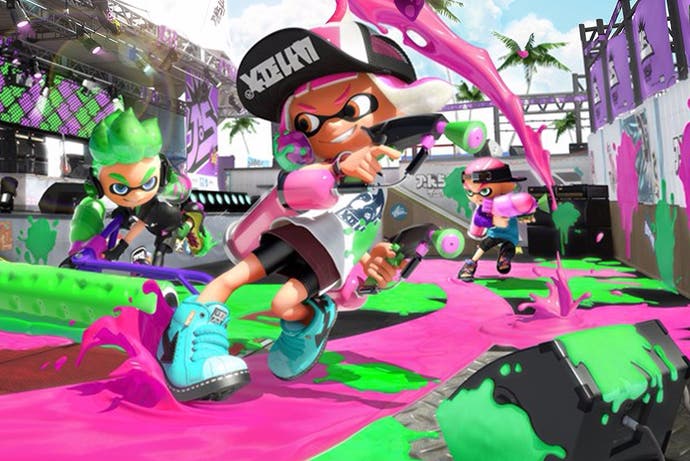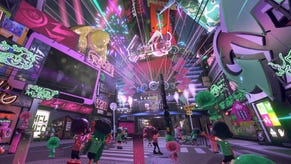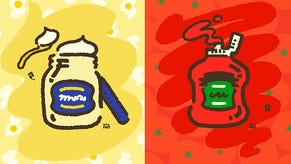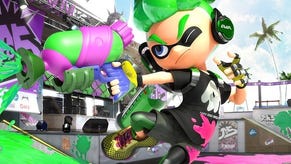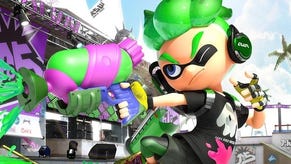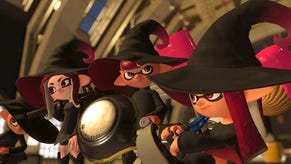How Splatoon 2's Switch tech improves over Wii U
It's about more than just the resolution.
We're no strangers to Splatoon 2, of course. It was one of the very first Switch titles we played at Nintendo's launch event - and the chances are that if you own the hardware, you would have participated in one of its 'test fire' pre-launch beta tests. We've had the opportunity to play the final version of the game and can now address some of the burning questions fans are posing. Specifically, to what extent is the engine technology an upgrade over the debut Wii U title - and what resolution does the game deliver in its final form?
Splatoon 2's pixel-count is an issue that many thought put to rest in the wake of E3, where during Nintendo's Treehouse stream, Hisashi Nogami - the game's producer - seemingly confirmed a 1080p output from the title. However, Nogami was speaking in Japanese and there was a subtle error in the translation - what he actually said was that the game runs at a maximum resolution of 1080p. And that's exactly what the game delivers: dynamic scaling according to GPU load - something we've already seen in Switch titles like The Legend of Zelda: Breath of the Wild and Fast RMX.
During docked gameplay, we noted a wide range of resolutions, peaking at 1080p in less busy scenes and dropping to 864p - the lowest native pixel-count we picked up on. However, the reality is that resolution is adjusting on a near constant basis to maintain the target frame-rate. You can test the dynamic resolution feature yourself right from the very first screen. If you point the camera upwards the resolution jumps straight up to 1080p but when you look back down it drops to 864p instead. A similar set-up is in place when the Switch is unseated from its dock, whereupon GPU clocks drop significantly. For the most part, Splatoon 2 seems to fluctuate between two specific framebuffer sizes - 1152x648 and the native 720p of the mobile display. The difference is subtle and likely to pass unnoticed during handheld gameplay.
There may be some disappointment here since Nintendo's mistranslated E3 statement set the expectation level high, but there are two takeaways here. On the one hand, the docked experience does offer a significant resolution boost over the original Wii U title, without any penalty to performance - and it still looks great in portable mode. On the flip-side, just like its predecessor, Splatoon 2 lacks any kind of anti-aliasing or texture filtering - two key components in image quality where we really hoped to see some improvement over the original game.
Curiously, Splatoon 2's hub area shows a re-evaluation of Nintendo's rendering priorities. Resolution bumps to a locked 1080p, while the signature 60fps performance level is halved to 30fps. Anti-aliasing is added into the bargain, giving us a kind of 'what if' scenario - the resultant image quality is a night and day improvement, but the hit to performance is unacceptable for a fast-paced shooter like this. Effectively, this hub area is demonstrating the cost of 60fps gameplay, and just how much performance we'd need to lose in order to present a consistently prettier image.
But the reality is that bumping resolution isn't the key priority for Nintendo. Switch's GPU upgrades are put to use across the board, not just in increasing the number of rendered pixels. Character models, for instance, are now more detailed all around, with increased geometry detail. The environments are also more detailed, especially in the texture department: surfaces are much sharper and more defined as a result of higher quality textures. The hub especially sees a huge improvement over the original. In this respect, we see Nintendo taking advantage of the much larger amount of memory Switch offers compared to its predecessor.
Shadows are also improved significantly. The Wii U version bakes many of its shadows into the environment, which do not cast onto the player model. Dynamic shadows are present, but often look pixelated and ugly. On Switch though, many more objects feature proper shadows that properly cast across the environment and player models alike - it's a significant step up from Wii U.
Splatoon's signature paint effect also gets an upgrade - it's thicker and 'goopier' thanks to more defined edges and a more pronounced surface sparkle. Ultimately, this is a case where on the surface, the two games look similar, but if you look closer it becomes clear that Splatoon 2 is a nice jump up from the original - you just need to look beyond the pixel count alone, improved as it is.
And the good news is that the enhancements do not come at any cost to performance. Turn 10 aside, no developer is as serious about its 60 frames per second lock as Nintendo. Splatoon 2 hits its performance target 100 per cent of the time. We've accrued many hours of gameplay over the last week and in all of our sessions so far, Splatoon 2 has yet to drop even one single frame. Not one. It is completely solid at all times. As of yet, we've been unable to play the online mode, so there's still a slight possibility that performance may drop, but the situation is looking extremely impressive thus far.
It's all about balance then. Yes, Splatoon 2 is a little rough in terms of image quality at times, but in the end image quality is sacrificed in favour of flawless performance. We believe it's one of the reasons that so many Nintendo titles stand the test of time - flawless performance simply makes the platform holder's brilliant concepts feel great to play. It also bodes well for future games on the system. Thus far, Mario Odyssey has been presented exclusively at 720p - just like older demos for Splatoon 2. With the improvement to image quality observed here, perhaps we'll see a similar solution in play on final code there.
Thus far, Nintendo's track record has been virtually spotless. Zelda: Breath of the Wild is the one game that exhibits slowdown on Switch but it is also one of the most ambitious games Nintendo has ever made. Everything else, though? It's a solid 60 frames per second. Just glancing over the North American eShop, there are 71 games available for Nintendo Switch. Some of them are simply emulated classics, of course, but if look through the list you will find that of the 71, more than 80 per cent of the games on the list run at 60 frames per second. While that includes some pretty basic titles it's still a superb turnout - and it's one of the key reasons why we're loving Nintendo's new console hybrid.
